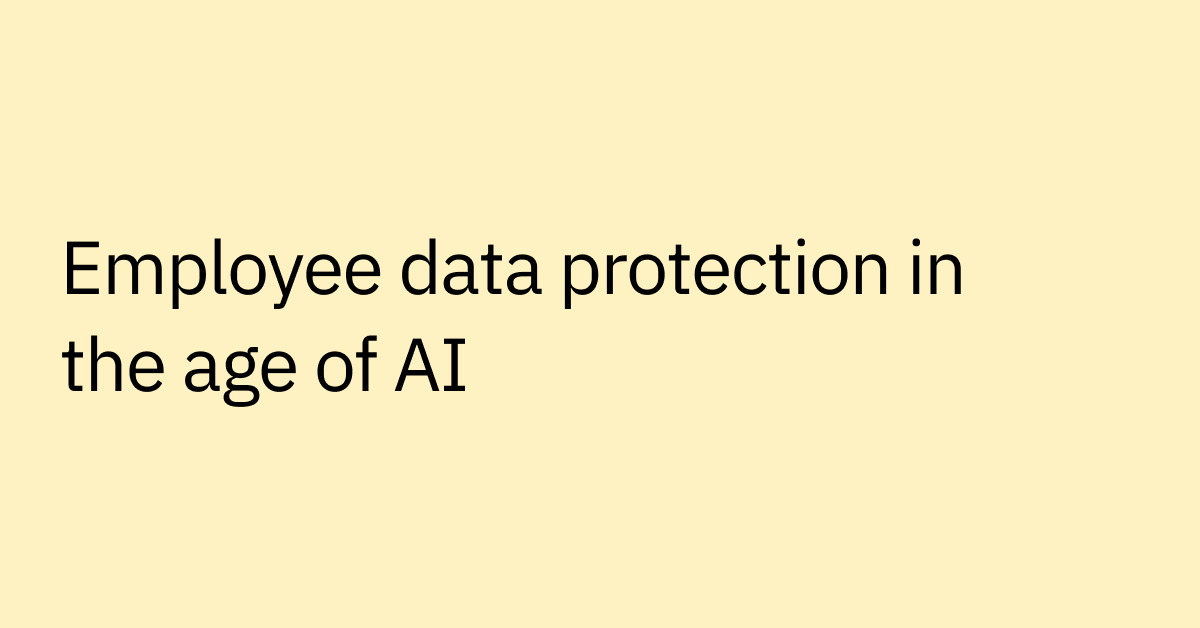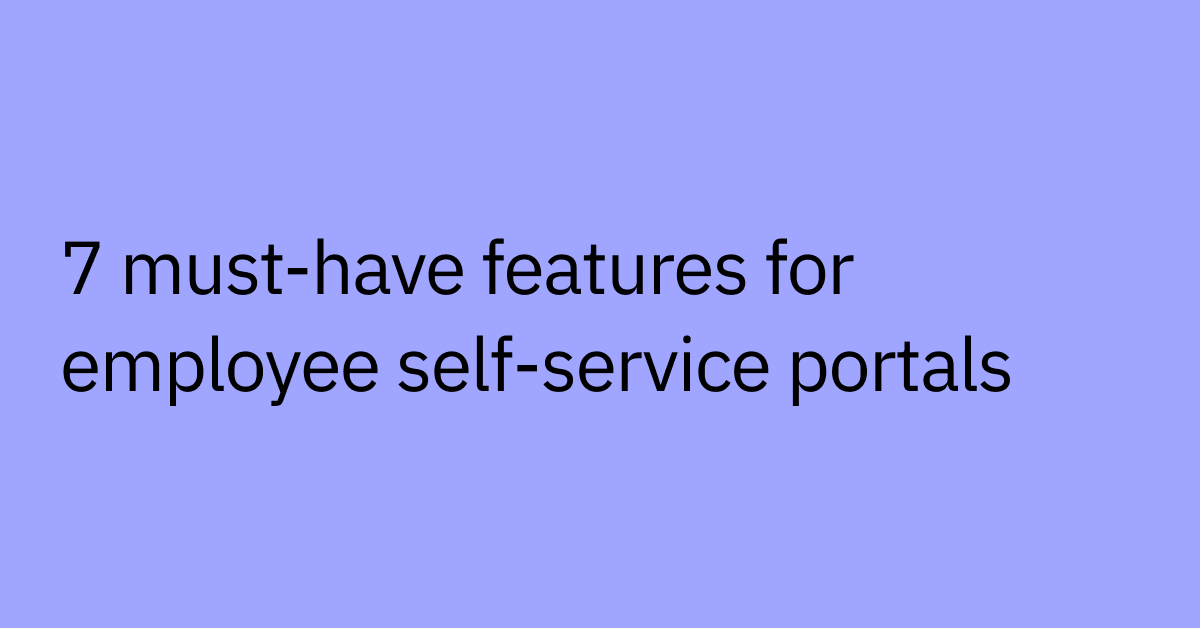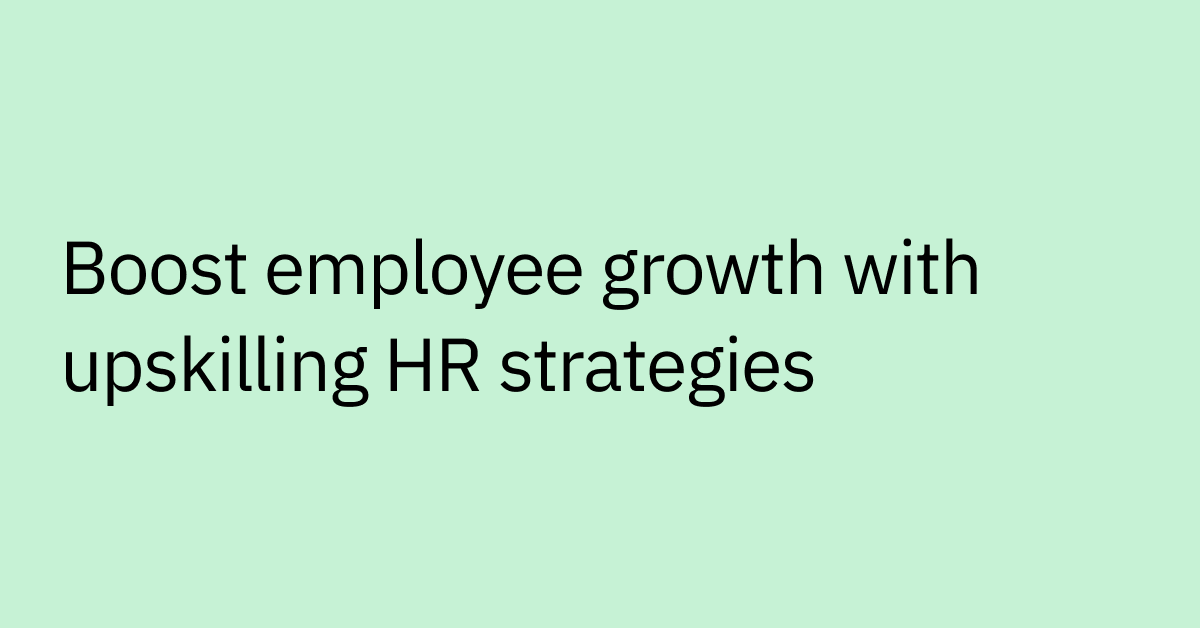Table of contents
Highlights
- Engaged employees drive real results: Companies with strong employee experience see a 14% boost in productivity, 23% higher profitability, and a 78% drop in absenteeism (Gallup).
- Perks alone don’t cut it: Sustainable employee experience requires systemic improvements in culture, processes, and technology, not just surface-level benefits.
- AI makes personalization scalable: From automating IT and HR support to surfacing real-time insights, AI enables organizations to deliver individualized experiences to thousands of employees.
- Journey mapping reveals the “moments that matter”: Key transitions like onboarding, promotions, or parental leave often make or break how employees feel about their company.
- A future-ready strategy is measurable and evolving: Strong EX strategies track both hard business outcomes (retention, turnover, productivity) and soft metrics (trust, belonging, engagement), refining continuously as expectations shift.
You’re reviewing the latest HR reports, and the truth is unavoidable: resignations are up, and the cost of constantly replacing talent is draining your budget. But when you look deeper, you realize it’s not just about salary.
Think about your own people's daily reality: they’re battling disjointed software, wading through confusing policies, and trying to feel motivated in a workspace that feels sterile or isolating. This isn't just a handful of problems; it's the friction and frustration baked into every single step of their workday, creating a constant grind that is pushing them out the door.
You need a single, intentional employee experience strategy to redesign the entire work journey.
Reports show that companies with engaged employees report seeing a 14% increase in productivity, 23% greater profitability, and 78% reduction in absenteeism. Those are attention-worthy numbers that underscore the importance of providing a great employee experience.
Yet defining this (and then successfully executing) your employee experience strategy can often feel fragmented or inconsistent. You might have great benefits, for example, but terrible technology. Or you’ll create a strong culture, but have slow employee support.
That’s why we’ll explore how to build a comprehensive, intentional framework to deliver a positive journey for employees. By understanding this and then creating an actionable plan for your business needs, you’ll be able to improve satisfaction, foster loyalty, and ultimately drive better outcomes across the employee journey.
What is an employee experience strategy?
An employee experience strategy is a structured, intentional plan to understand, design, and improve how employees interact with your company, including everything from workplace culture and relationships to the tools and processes employees rely on to get work done.
It's essentially a blueprint for optimizing every touchpoint within the employee lifecycle to improve employee outcomes, which typically include:
- Engagement
- Turnover and retention
- Productivity
For example, a good employee experience strategy might include streamlining the onboarding process for a smoother start for new hires, making IT support better through automation, or introducing recognition programs that reflect and reinforce company values.
When someone joins your team, requests time off, needs IT help, or seeks career guidance, your strategy can determine whether that experience feels easy and intuitive or frustrating, and ultimately influence your business outcomes as well.
To learn more about how to build a positive employee experience and effectively measure productivity, read our Ultimate Guide to Measuring Employee Experience and Productivity.
Employee experience strategy implementation challenges
Most organizations face predictable obstacles when building out their employee experience strategy:
- Over-indexing on perks vs. systemic improvements: Focusing on surface-level benefits while ignoring existing underlying process problems
- Ignoring manager enablement: Expecting front-line managers to deliver great experiences without proper training or tools
- Treating EX as an HR-only initiative: Missing the cross-functional nature of the employee experience
- Measuring outputs instead of outcomes: Tracking the number of trainings rather than measuring employee engagement and growth
These are all addressable, though. We'll discuss how to overcome these challenges throughout this guide.
How to build an employee experience strategy
An effective employee experience strategy tackles immediate issues, building for lasting organizational improvements. Companies can achieve this by automating routine tasks, using employee data for decision-making, and integrating employee experience into all aspects of the business strategy — not just Human Resources.
Step 1: Assess your current employee experience
Start by gathering qualitative and quantitative feedback through surveys, focus groups, sentiment analysis, onboarding feedback, performance data, and exit interviews. You're looking for patterns, not individual, one-off complaints.
Then map out your current strengths, gaps, and recurring themes that appear to impact engagement and employee retention. Pay attention to moments where employees consistently encounter hurdles or confusion.
Finally, share your findings with employees. This transparency builds trust and shows them you value their input. And when people see you're listening and taking action, they're more likely to engage in future feedback efforts.
The assessment phase reveals where your biggest opportunities lie. You might find that new hires feel lost during their first week, that managers need better tools for performance conversations, or that employees waste time navigating disconnected systems.
Step 2: Define clear goals aligned to business priorities
Set goals that tie directly to business outcomes, like improving engagement scores, reducing turnover, increasing internal mobility, or strengthening manager effectiveness. But don't stop at traditional HR metrics. Bring in broader objectives like reducing burnout, improving cross-team collaboration, or accelerating time-to-productivity for new hires.
Align your goals with your company’s current needs. If you're scaling rapidly, focus on maintaining culture and connection as you grow. If you're going through digital transformation, prioritize change management and technology adoption.
Your goals should make sense to executives who care about bottom-line results. When leaders see how employee experience drives revenue, innovation, and competitive advantage, you can earn the support and resources needed to make real change happen.
Step 3: Map the employee journey
In your pattern recognition, note all touchpoints from onboarding to offboarding. Document the current state of each interaction and pinpoint where employees encounter issues or lack support.
These can also be "moments that matter," like promotions, parental leave, relocations, or major project launches. These experiences often have an outsized impact on how employees feel about the organization (and their place within it).
Pay special attention to handoffs between departments, as these can be common pain points, especially with siloed departments. Journey mapping can also help identify discrepancies between perceived and actual employee experiences, like onboarding processes that fail in practice due to issues with system access or equipment.
Step 4: Leverage technology to remove barriers
Use AI tools to automate routine support, providing instant answers to common questions. This can free up your HR and IT teams to focus on more strategic work while giving employees faster, more consistent service.
Make your employees' daily work experiences better with tools like collaboration platforms, learning systems, and wellness apps. Also, prioritize integration and a user-friendly design, along with offering proper training so that employees can see the value through knowing how to use the tools effectively.
Technology indeed helps with efficiency — and it brings value by creating experiences that feel personal and responsive. When employees can get instant answers or complete tasks without waiting, they often feel more supported and empowered to do what they were hired to do.
Step 5: Measure, refine, and evolve the strategy
Finally, track hard metrics like turnover, time-to-resolution, and absenteeism, along with soft metrics like sense of belonging, employee trust, and cultural alignment.
Also, expand your data collection beyond traditional annual surveys:
- Conduct sentiment and engagement surveys more frequently.
- Review operational data, like onboarding completion rates and support ticket trends.
- Gather qualitative feedback from focus groups, exit interviews, and manager conversations.
- Benchmark against internal baselines or industry peers.
Use data to connect employee experience initiatives to measurable business outcomes such as retention rates, productivity, and cost reduction. This connection can help secure ongoing investment and executive support.
AI tools can surface insights that help leaders optimize employee experience initiatives by analyzing patterns in employee feedback and identifying emerging issues before they turn into bigger problems. Using these insights, treat your employee experience strategy as a continuous, ever-evolving system to adapt to (also ever-evolving) employee expectations and workplace dynamics.
Key elements of a great employee experience strategy
The following elements can help create the environment where smart improvements flourish. Strong culture, flexible work arrangements, growth opportunities, and recognition programs can work together to support the strategic steps outlined above.
Well-being and work-life balance
Employee well-being initiatives that reduce stress and support work-life balance can directly impact productivity and retention. When employees feel supported as whole people, they're more likely to stay engaged and perform at their best.
Open, transparent communication can help build the psychological safety that high-performing teams need. Leadership behaviors, clear company values, and consistent communication can create trust and long-term loyalty.
Flexible hours, mental health support, and proactive burnout prevention can also help employees maintain that high performance while feeling supported. This idea extends to diversity, equity, and inclusion as well. When people feel they belong and can bring their authentic selves to work, engagement and innovation naturally follow.
Companies like Tufin demonstrate how values-driven well-being initiatives create lasting impact. During the pandemic, they launched "Tufin Cares," a volunteering program that helped employees give back to their communities through food distribution, elder care, and sustainability projects, ultimately reinforcing their core value of treating everyone with respect and care.
Creating a productive, flexible work environment
Your technology should feel intuitive and reliable. When employees don't have to fight with their tools, they can focus on work that matters.
You create more flexibility when you align it with how people work. Some people need quiet home offices for deep focus. Others thrive in collaborative in-office spaces. The goal is to give people choices about when, where, and how they get their best work done.
Keep listening and adjusting based on what you learn. Employee needs evolve, especially as work models and business priorities shift. When employees feel they have control over their work environment and schedule, job satisfaction scores can go up while turnover goes down.
Supporting continuous growth and development
Growth opportunities should be woven throughout the employee experience, not just saved for annual reviews. Your people want to see a path forward, not just a steady paycheck.
Connect learning directly to what employees care about. When someone can see how new skills help them advance or contribute more meaningfully, they’ll naturally be more engaged.
Also, make career paths visible and accessible. Employees should know what opportunities exist and what it takes to get there. Pair this with mentorship to provide people with the guidance they need to support their goals.
As AI continues to transform how work gets done, help your team understand how to work alongside these new tools. Technology can be framed as an enhancement to their capabilities rather than a threat to their job security.
Employees at companies with strong career development programs may be more likely to stay with an employer longer. Features like structured career mapping, leadership development opportunities, succession planning, and accessible online learning can create environments where people feel encouraged to advance.
Recognizing and rewarding contributions
Recognition hits differently when it's personal and timely. Generic "employee of the month" programs can feel a bit hollow compared to acknowledging someone's specific impact on a project or their growth in a particular skill.
Connect recognition directly to your company values. When you celebrate behaviors that align with what matters most to your organization, you reinforce culture while making people feel genuinely valued.
The most effective recognition happens in real time and matches what motivates each person. Some appreciate public shout-outs in team meetings, while others prefer one-on-one feedback or new learning opportunities. Peer-to-peer recognition can often carry more weight than top-down appreciation because it comes from people who see the daily work up close.
The role of AI in elevating employee experience
Manual support doesn't scale when you have thousands of employees across different locations and time zones. That's why leaders are shifting from basic automation to AI that thinks through problems and takes action.
Here's how the technology has evolved:
- Traditional automation handles simple, repetitive tasks like sending reminder emails or updating database records. It's helpful, but rigid. You still need people to manage exceptions and connect the dots between different systems.
- AI systems go further by analyzing patterns and making predictions. They might spot trends in employee survey data or identify which teams are struggling with engagement. But they typically need human oversight to decide what to do with those insights.
- Agentic AI is where things get more powerful. These systems make it easier to act on those insights. Agentic AI can automatically send personalized reminders for benefits enrollment, escalate to HR if needed, and track everything to completion, all with little to no intervention.
This means employees can get instant, personalized support while your HR and IT teams focus on strategic work instead of routine requests.
Large enterprises, specifically, face the unique challenge of creating personal experiences for thousands of people without drowning support teams. AI can solve this by automating the routine tasks, personalizing interactions based on role and location, and surfacing real-time insights that help you continuously improve rather than waiting for annual survey results.
See how AI can transform your organization’s HR strategy. Download our guide to learn how to drive culture, performance, and growth with AI-powered solutions.
How AI helps overcome common challenges
AI addresses the most persistent obstacles that prevent employee experience strategies from delivering their intended impact.
Siloed systems and inconsistent processes
You know the problem: an employee needs help with benefits, so they contact HR. But their question also involves system access, so HR has to loop in IT. Then it turns out there's a policy question that requires input from another team. What should be a simple request turns into a multi-day email chain.
AI helps break down these silos by connecting your systems and creating a single entry point for employees. Whether someone needs a password reset, wants to update their direct deposit, or has questions about parental leave, they get consistent support without being bounced between departments.
Executive support can make or break these initiatives. When leaders visibly champion employee experience improvements and hold departments accountable for collaboration, the cross-functional changes can stick.
Difficulty measuring employee experience
Many organizations lack reliable metrics or struggle to connect employee sentiment to measurable business outcomes. Traditional approaches like annual surveys ultimately provide limited, delayed insights.
AI can surface insights from unstructured feedback and connect sentiment data to business outcomes. This gives leaders real-time visibility into experience drivers and their impact on retention, productivity, and engagement.
Employee listening and feedback loops are still important, and AI enhances their effectiveness by analyzing patterns across multiple data sources and identifying trends that might not be apparent through traditional survey methods alone.
Meeting diverse workforce needs
A software engineer in Tokyo works differently than a sales rep in São Paulo, who has different needs than a part-time contractor in London. Yet many companies try to support everyone with the same processes and tools.
AI makes personalization possible at enterprise scale. It can understand the context of someone's role, location, language, and work patterns, then deliver relevant support automatically. Your Japanese employee gets responses in their language during their business hours, while your Brazilian team member receives region-specific policy information in Portuguese.
This approach recognizes that different people need different things, then builds systems flexible enough to deliver on that promise.
Change fatigue and adoption challenges
Employees can feel overwhelmed by constant organizational transformation and new technology implementations, leading to resistance and poor adoption of new tools and processes.
AI can smooth the transition by handling the routine stuff so employees aren't overwhelmed by new processes and their regular workload. It also provides support when people need it, like offering step-by-step guidance the first time someone uses a new system.
When technology reduces problems instead of creating more hoops to jump through, people embrace it.
Learn more about improving employee experience and productivity with actionable insights in The Ultimate Guide to Measuring Employee Experience and Productivity.
Bringing it all together: A holistic, future-ready approach
Your employee experience strategy ultimately needs to be intentional, measurable, and ready to evolve as your company grows and employee expectations shift.
Easier said than done, of course, especially with the questions that keep leaders up at night:
- How do you deliver personalized support to thousands of employees across different locations and time zones?
- How do you keep hybrid teams engaged when they're not all in the same room?
- How do you improve service quality without ballooning operational costs?
The Moveworks AI Assistant tackles the first challenge by automating routine employee support. Instead of waiting for tickets to get routed and resolved, employees get instant answers to common questions. This frees up your HR and IT teams to work on initiatives that move the needle on culture and business goals.
Moveworks Employee Experience Insights solves the visibility problem by putting your entire employee experience on a single dashboard. You can see what issues are trending, where people are getting stuck, and whether your initiatives are working, all in real time.
The combination gives you immediate impact and long-term strategic advantage, with your people at the center of it.
Learn how AI can transform your HR strategy and create an unparalleled employee experience.
Frequently Asked Questions
Employee experience refers to the overall journey an employee has with a company — including culture, tools, processes, and relationships — while employee engagement is the level of commitment, motivation, and enthusiasm employees bring to their work. A strong employee experience often leads to higher engagement.
Track quantitative and qualitative metrics, such as employee sentiment scores, engagement survey results, turnover rates, internal support response times, and productivity indicators. Tools like Moveworks Employee Experience Insights make it easier to gather current data, benchmark against peers, and measure ROI.
Yes. Small, targeted improvements like streamlining onboarding, automating routine requests, or improving feedback loops can significantly impact how employees feel about their workplace and their productivity.
AI goes beyond automation — it empowers your teams to be more responsive, proactive, and employee-centric. It can automate repetitive tasks, provide instant support, and deliver personalized resources, which in turn frees employees to focus on meaningful work. For example, the Moveworks AI Assistant is able to address issues in seconds, boosting satisfaction and efficiency.
Review your strategy at least annually, but use real-time data to make iterative improvements throughout the year. Employee needs, technology, and business goals evolve quickly, so adaptability is key.
Ownership is often cross-functional. While CHROs often lead, CIOs, People Ops, and business leaders all play a role. The most effective strategies succeed because accountability is shared across HR, IT, and leadership — making employee experience an enterprise-wide priority.
Investing in employee experience pays off in measurable ways: lower turnover, higher engagement, and stronger productivity. Research shows that companies with top-tier employee experience outperform peers in profitability, retention, and innovation. In short, a thoughtful employee experience strategy drives employee satisfaction and business growth.



